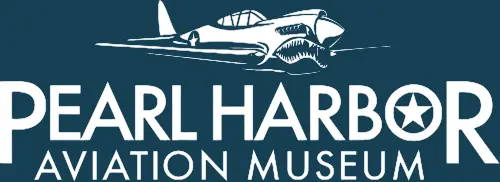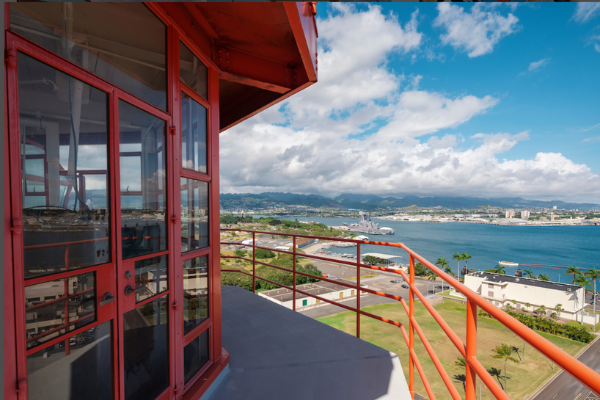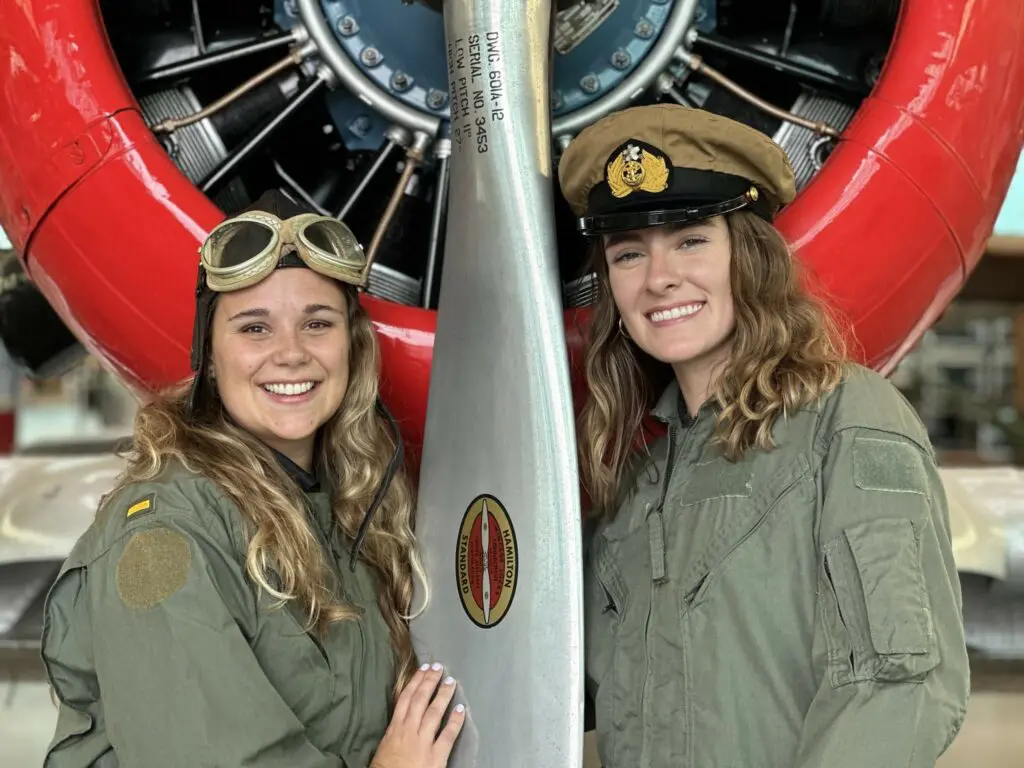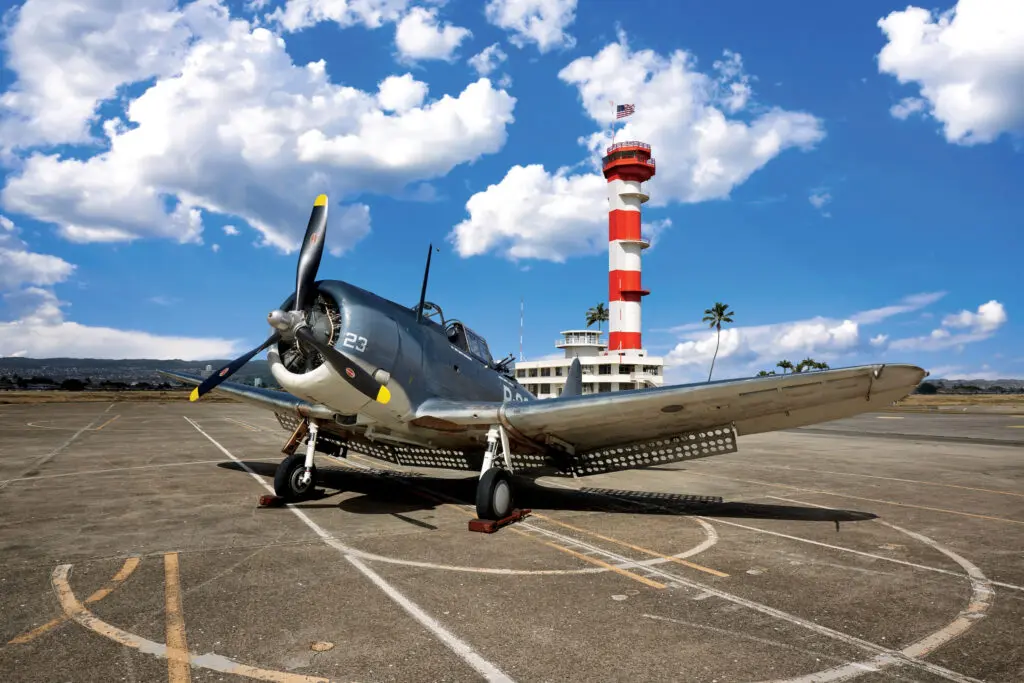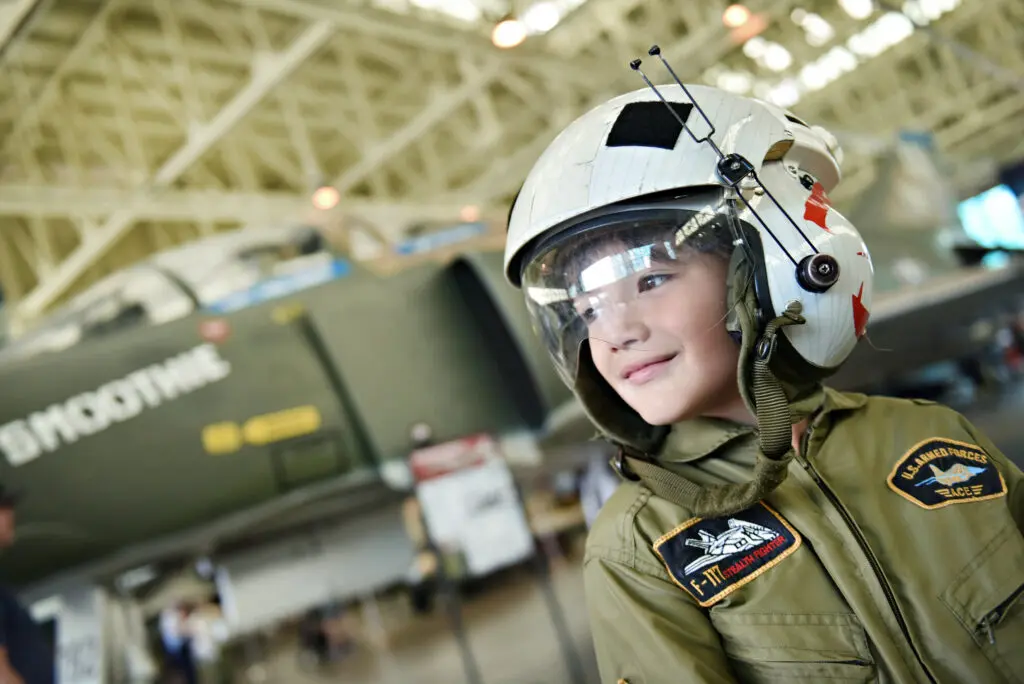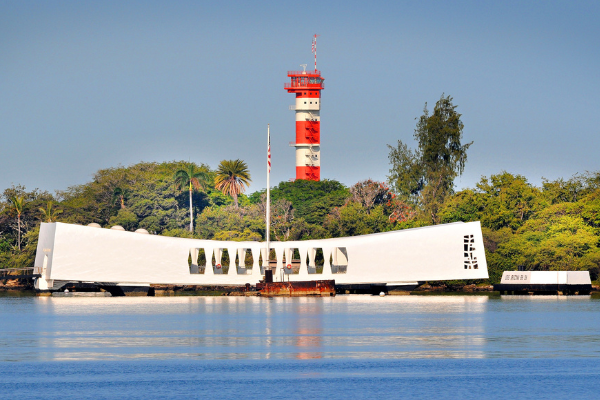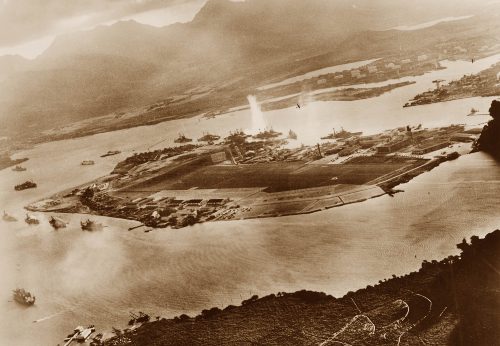Ready Room Blog
5/16/2018
De Havilland D-82a Tiger Moth
The Tiger Moth was to the British Commonwealth what the Boeing Stearman was to the United States—the plane that most pilot candidates first flew to begin their flight training or to end it if they did not have the “Right Stuff.”
World War II British Commonwealth Elementary Flight Trainer
Key Points
- Two-place fabric-skinned biplane used in Elementary Flight Training in the British Commonwealth in World War II. This is the training stage in which pilot candidates first flew. Many washed out.
- Our Tiger Moth is from Australia, which trained 37,500 crew members.
- Its wings were slightly swept back to maintain the center of lift and gravity after early design changes
- Its engine was an inline, four-cylinder, air-cooled de Havilland Gipsy Major. It was mounted inverted to give a high center line for thrust. This gives it the deep chin.
- Ailerons (only on the lower wing) were unusual in that the inner-wing aileron in a bank moved more than the outer-wing aileron. This reduced yaw in turns.
- Compared to the Boeing Stearman Kaydet, the Tiger Moth was about the same size but was much lighter, had a less powerful engine, and had less performance.
- Sir Geoffrey de Havilland loved butterflies and moths. This insect naming continued later, resulting in the Mosquito.
The Boeing/Vertol CH-46 Sea Knight, better known as the Phrog, became operational in 1964. However, it was preceded by almost two decades of thinking that refined the United States Marine Corps’ doctrine for troop assault.

Primary and Elementary Flight Training
Pilots in training master increasingly difficult skills, in increasingly more powerful and complex aircraft. After ground school, actual flying starts at what Americans called Primary Training and the British Commonwealth called Elementary Flight Training (EFT). For both, this was the big washout stage. Candidates learned whether they had enough of the “Right Stuff” to go on.
Airplanes for Primary/Elementary Flight Training had to be straightforward to fly. They had few instruments and were free of distracting flaps, complicated engine settings, radios, wheel brakes, and retractable landing gear. The simple fuel tank in the upper wing was gravity fed. Student had a hard-enough time getting the airplane to go where it was supposed to.

Primary Trainers also had to be tough, because students made hard landings or landed not entirely upright. In the United States, primary trainers were painted yellow entirely or in part. This was the equivalent of a “Student Driver” sign in the back windows of today’s cars. It warned everybody to give them a little more room. Many students, argued instead that yellow paint made the wreckage easier to find. Flight programs across the world used tens of thousands of these tough little planes, and because they were over-engineered to survive students, many are still in the air.
In America, the main Primary Trainer was the Boeing Stearman Kaydet, which the Navy called the NS or N2S and the Army called the PT-13, PT-17 or something else depending on its engine. Pearl Harbor Aviation Museum has showcased an N2S Stearman since its opening in 2006. Future president George H. W. Bush flew solos in this airplane (but not his first). The museum has recently acquired a de Havilland Tiger Moth, which was the main Elementary Flight Trainer in the British Commonwealth.

Fortunately, the Marines’ next-generation helicopters were not too long in coming. The Marines settled on a large/medium mix for their future helicopter inventory. Their large cargo helicopter would be the massive yet fast CH-53 Sea Stallion. The big hauler reached Vietnam in early 1965, and soon took over the cargo mission. However, the CH-53 was not what the Marines wanted for
troop assault.
The Tiger Moth
The Tiger Moth is two-place fabric-skinned biplane. Its bottom wing is staggered backward to aid pilot vision and reduce interference between the wings. This arrangement also aids cockpit access. One unusual aspect of the wings is that they are slightly swept back. Obviously, this was not because they flew near the speed of sound. Rather, to improve pilot access (and exit in flight when necessary), the center bracing struts for the upper wing were moved from the rear of the front position to the front after the airplane was designed. The back sweep maintained the center of gravity and center of lift after this change.
Figure 4: De Havilland Tiger Moth with Swept-Back Wing and Deep Chin Due to its Inverted Inline Engine, which was Air-Cooled.

The engine in the Tiger Moth was a de Havilland Gipsy Major. This four-cylinder inline engine was air-cooled and produced a modest 122 horsepower from its 374 cubic inches. Surprisingly, it was installed inverted. This gave a high center line for the crank shaft to drive the propeller. It also gave it a deep “chin” below the propeller.
Only the bottom wing had ailerons. They were ingeniously engineered so that when the airplane banked, the aileron on the inside of the turn rotated substantially, while the outside aileron barely moved. This simple system reduced adverse yaw.
Although the Tiger Moth is a British design, England was not a safe place to do pilot training early in the war. In addition, many pilots would need to be trained in the Pacific. Sending them to England would have been difficult and expensive. The Royal Air Force created the British Commonwealth Air Training Plan that dispersed ground school and Elementary Flight Training throughout the empire. The museum’s Tiger Moth trained Australian aircrews during the war. Overall, Australia trained 37,500 air crew members.
The name? Geoffrey de Havilland had a great love of butterflies and moths, naming many of his planes after specific species. This insect naming continued later, resulting in the famous Mosquito light bomber.
Characteristics
Table 1 compares early models of the Boeing Stearman and the Tiger Moth. Physically, they were nearly the same size. However, the Kaydet had almost twice the power and was much heavier. This gave the Kaydet only a modest performance gain, however. In later versions, Tiger Moths grew slightly in power and performance while Kaydet performance remained fairly constant.

